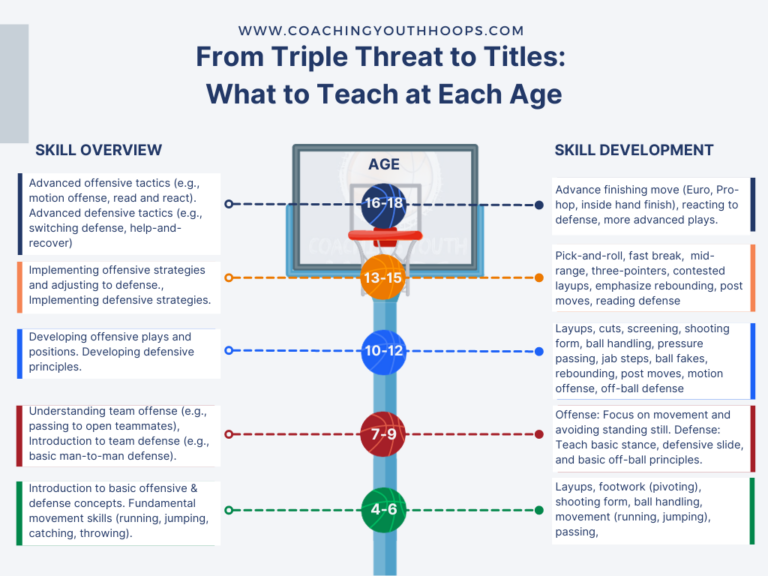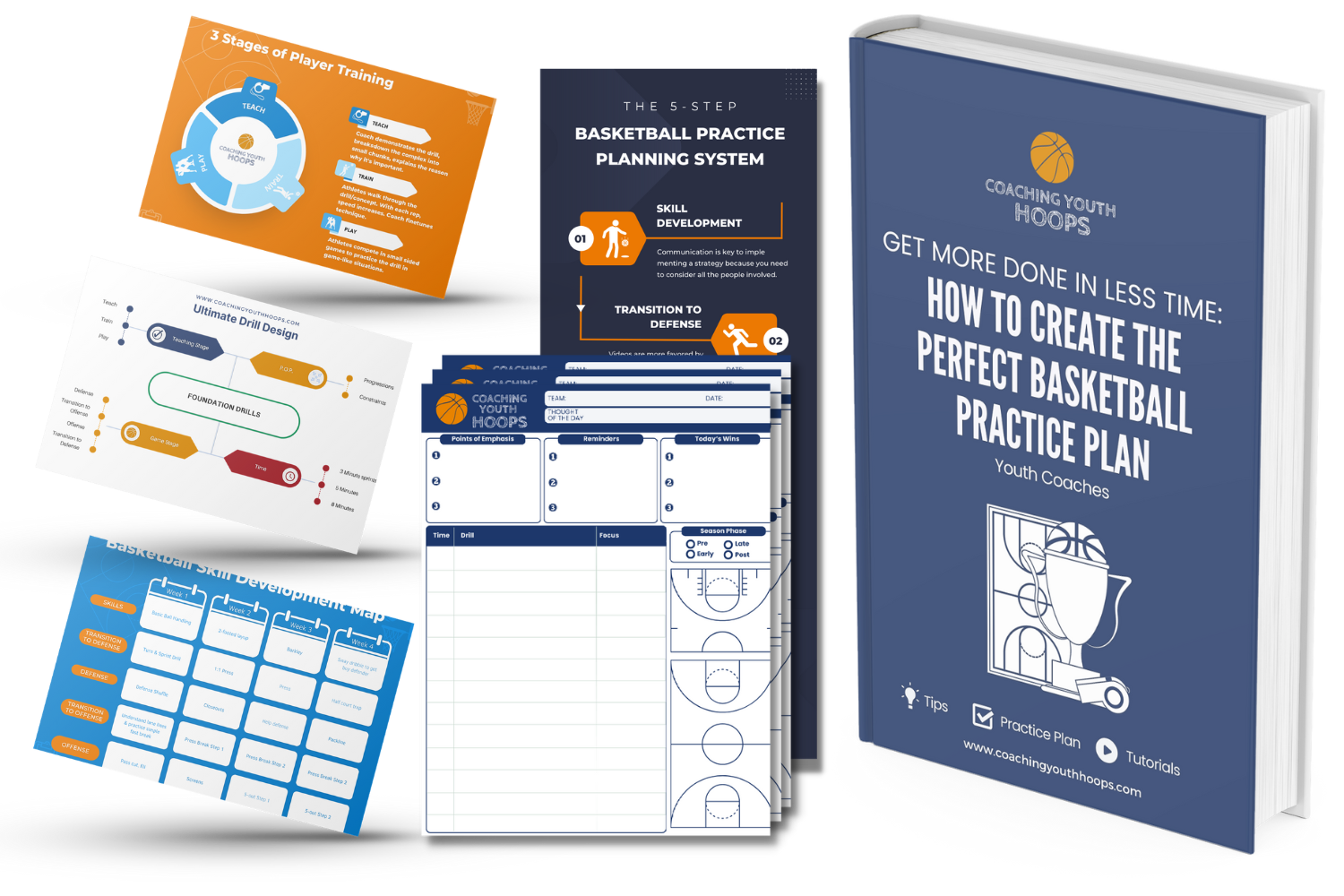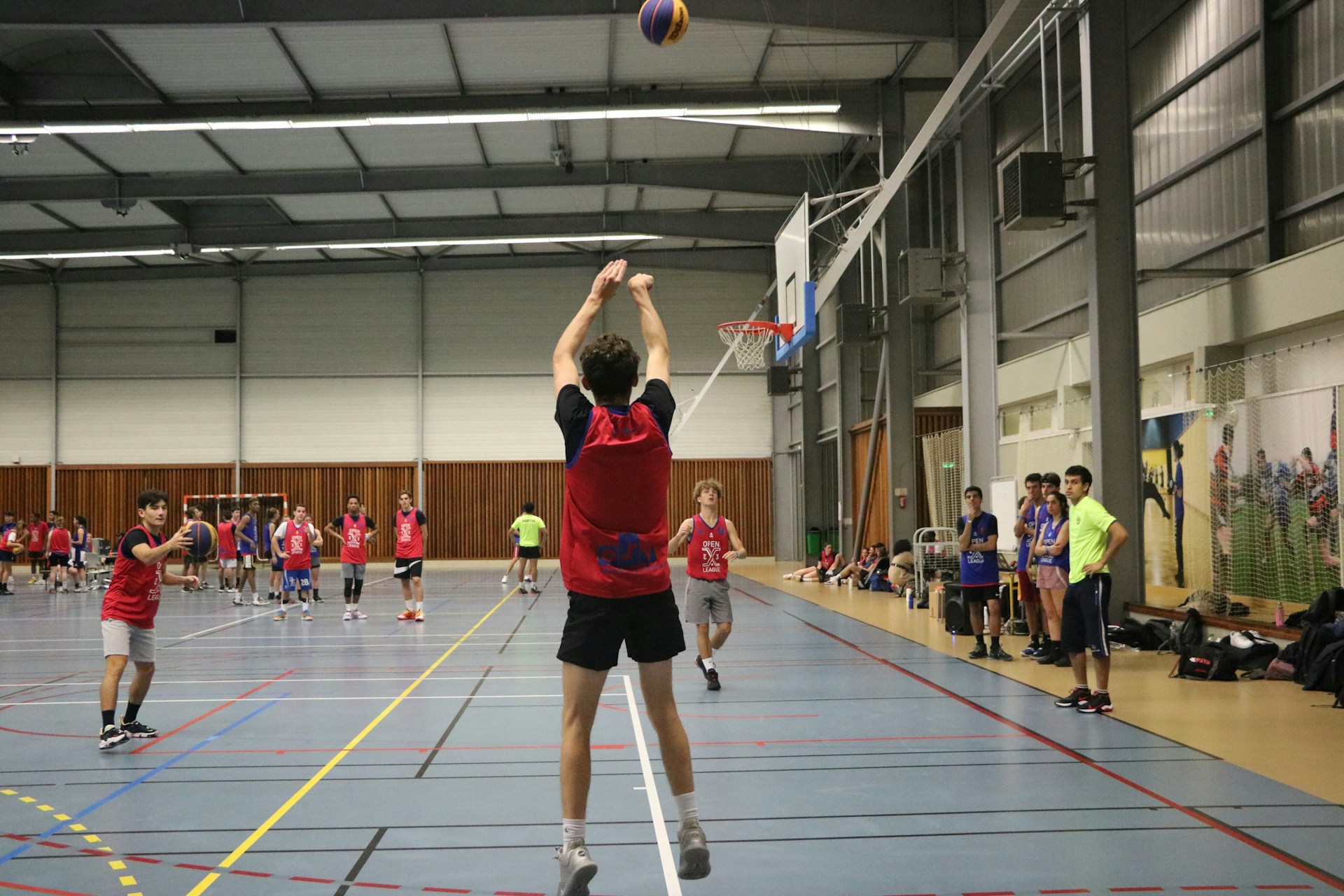Discussion Points:
- Introduction
- Rethinking Basketball Practice: Adapting to Modern Players’ Needs
- 3 Essential Elements of a Youth Basketball Practice Plan
- Age-Specific Practice Recommendations
- Conclusion
- FAQs
Creating an Effective Youth Basketball Practice Plan
Introduction
As a veteran basketball coach, I’ve seen firsthand the impact a well-structured practice plan can have on a team’s development and success. Whether you’re coaching a group of eager third graders or a competitive eighth-grade squad, the foundation of your coaching strategy should always be a robust basketball practice plan.
When I first started coaching, I quickly realized that having a detailed practice plan was crucial not only for keeping practices organized but also for ensuring that each session was productive and beneficial for all players. A good practice plan helps maintain focus, maximizes limited practice time, and ensures players develop the necessary skills and understanding of the game.
Creating an effective basketball practice plan involves balancing skill development, gameplay, and fun activities. This can be particularly challenging for new coaches who might feel overwhelmed by the plethora of drills and exercises available. In this post, I’ll share essential elements every youth basketball practice should include, tailored advice for different age groups, and practical tips to enhance your coaching effectiveness. Drawing on years of experience and feedback from other seasoned coaches, these insights will help you create practice plans that are not only effective but also engaging for your young athletes.
Rethinking Basketball Practice: Adapting to the Modern Player’s Needs
As a veteran basketball coach with years of experience, I’ve seen the game evolve dramatically. One of the most significant changes we must address is our basketball practice plan approach. It’s time to rethink the traditional methods and adapt to the needs of today’s youth players. Here’s why and how we can do it.
The Traditional Practice Model is Outdated
For decades, we’ve relied on a block structure for practice sessions. This typically involves long, repetitive drills focusing on team offense and defense. While this method worked in the past, it’s not as effective with today’s players. The current generation, immersed in a world of social media and instant gratification, often struggles to stay engaged with long, monotonous drills.
Embracing a Dynamic Practice Structure
Modern basketball players require a more dynamic and engaging practice structure. That’s why developing an effective basketball practice plan is key. This involves shorter, varied drills that keep players on their toes. Here are some strategies to implement:
- Shorter, More Engaging Drills: Instead of spending 20 minutes on a single drill, break it down into shorter segments. Rotate drills frequently to maintain high energy levels and engagement.
- Skill Development Over Team Strategy: Focus on individual skills such as dribbling, shooting, and passing. Ensure players master these fundamentals before moving on to complex team strategies. This approach has proven successful; for instance, an eighth-grade team I coached showed remarkable improvement by prioritizing skill training over team drills.
- Use of Constraints: Introduce constraints within drills to focus on specific skills. For example, limit scoring to only occur through pick and rolls. This not only enhances specific skills but also keeps drills interesting and challenging.
- Player Involvement: Engage players by allowing them to modify drills. This not only makes practice more fun but also gives players a sense of ownership and investment in their development.
Adjusting to Modern Attention Spans
Today’s youth have shorter attention spans, influenced by the fast-paced, ever-changing content they consume daily. To keep them engaged:
- Frequent Changes: Change drills and activities frequently to maintain their interest.
- Competitive Elements: Incorporate competitive elements and keep score in most drills. Adding consequences for losing can also drive engagement and effort.
What to Teach at Each Age
Unlock the secret to crafting drills and practice plans that perfectly match your team’s cognitive and motor skill growth at every age level.

3 Essential Elements of a Youth Basketball Practice Plan
- Skill Development:
- What It Is: Focusing on individual skills such as shooting, ball handling, dribbling, passing, and defense.
- Why It Matters: These are the building blocks of basketball. Ensuring each player develops a strong skill set is crucial for their growth and the team’s overall performance.
- How to Implement: Dedicate a portion of every practice to drills that hone these skills. Rotate the focus to cover different areas in each session.
- Small-Sided Games:
- What It Is: Games like 2-on-2, 3-on-3, or 3-on-4 that emphasize gameplay without the complexity of full 5-on-5 setups.
- Why It Matters: These games promote a better understanding of positioning, teamwork, and strategy. They also allow more touches and involvement for each player.
- How to Implement: Include small-sided games in every practice to help players apply their skills in a game-like context.
- Fun Activities:
- What It Is: Engaging and enjoyable drills or scrimmages that keep players interested and excited about practice.
- Why It Matters: Fun is essential, especially for younger players. It fosters a positive attitude towards the sport and encourages consistent attendance.
- How to Implement: End practices with a fun game like dribble tag, knockout, or a friendly scrimmage. Adjust the activities based on the age and skill level of your team.
Age-Specific Practice Recommendations
- Grades K-3:
- Focus Areas: Ball handling, basic dribbling, and fun game-based activities.
- Basketball Practice Plan Structure: Keep practices light and enjoyable, with a strong emphasis on making basketball fun. Introduce basic basketball movements and simple drills.
- Example Drill: Tiger Drill – A basic five-spot movement drill to teach the fundamental movements of the game.
- Grades 4-6:
- Focus Areas: Continued skill development, introduction of offensive and defensive schemes, and small-sided games.
- Basketball Practice Plan Structure: Balance skill drills with teaching simple plays and defensive strategies. Incorporate small-sided games to practice these in a dynamic setting.
- Example Drill: 3-on-3 games focusing on passing and moving without the ball to enhance understanding of offensive spacing and defensive coverage.
- Grades 7-8:
- Focus Areas: Advanced skill development, shooting practice, scoring techniques, and competitive small-sided games.
- Basketball Practice Plan Structure: Increase the complexity of drills and introduce more nuanced game strategies. Emphasize competition to prepare players for higher levels of play.
- Example Drill: Competitive shooting drills where players face consequences for losing, fostering a competitive environment that simulates game pressure.
Conclusion
Crafting a well-rounded basketball practice plan is essential for developing players and preparing a team for success. Coaches can create an environment where young athletes thrive by focusing on skill development, incorporating small-sided games, and ensuring fun and engaging practices. Tailoring practice plans to the age and skill level of the team ensures that each player receives the appropriate challenges and opportunities for growth. The traditional methods of long, repetitive drills are less effective with today’s players, who benefit more from dynamic, varied practices that keep them engaged and motivated.
Adapting to the modern player’s needs involves embracing shorter, more engaging drills, and incorporating competitive elements to maintain high energy levels. Coaches should prioritize skill development over complex team strategies, especially in the early stages, to build a strong foundation. Additionally, involving players in developing the basketball practice plan and introducing constraints within drills can make sessions more interesting and challenging. By evolving practice approaches to meet the needs of contemporary youth players, coaches can foster a positive attitude towards the sport, ensuring consistent attendance and enthusiastic participation, ultimately leading to a more successful and enjoyable basketball experience for all involved.
Boost Skill Development, Eliminate Stress and Run Better Practices

FAQs
Q: Why is a basketball practice plan so important for youth basketball teams?
A: A practice plan ensures that practices are organized, productive, and help players develop essential skills.
Q: How can I keep my players engaged during practice?
A: Use shorter, varied drills, rotate activities frequently, and involve players in modifying drills to maintain high energy and interest.
Q: What should I include in my basketball practice plan?
A: Include skill development, small-sided games, and fun activities to create a well-rounded and engaging practice.
Q: How do I tailor my basketball practice plan for different age groups?
A: Focus on basic skills and fun for grades K-3, skill development and simple strategies for grades 4-6, and advanced skills and competition for grades 7-8.
Q: How can I adapt my practices to the needs of modern players?
A: Implement dynamic structures with frequent changes, competitive elements, and player involvement to keep practices interesting and challenging.



